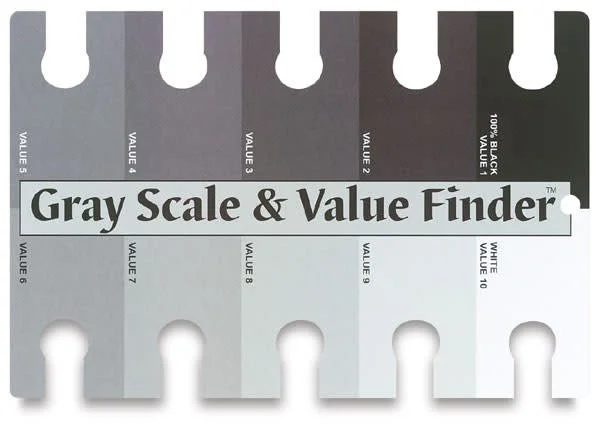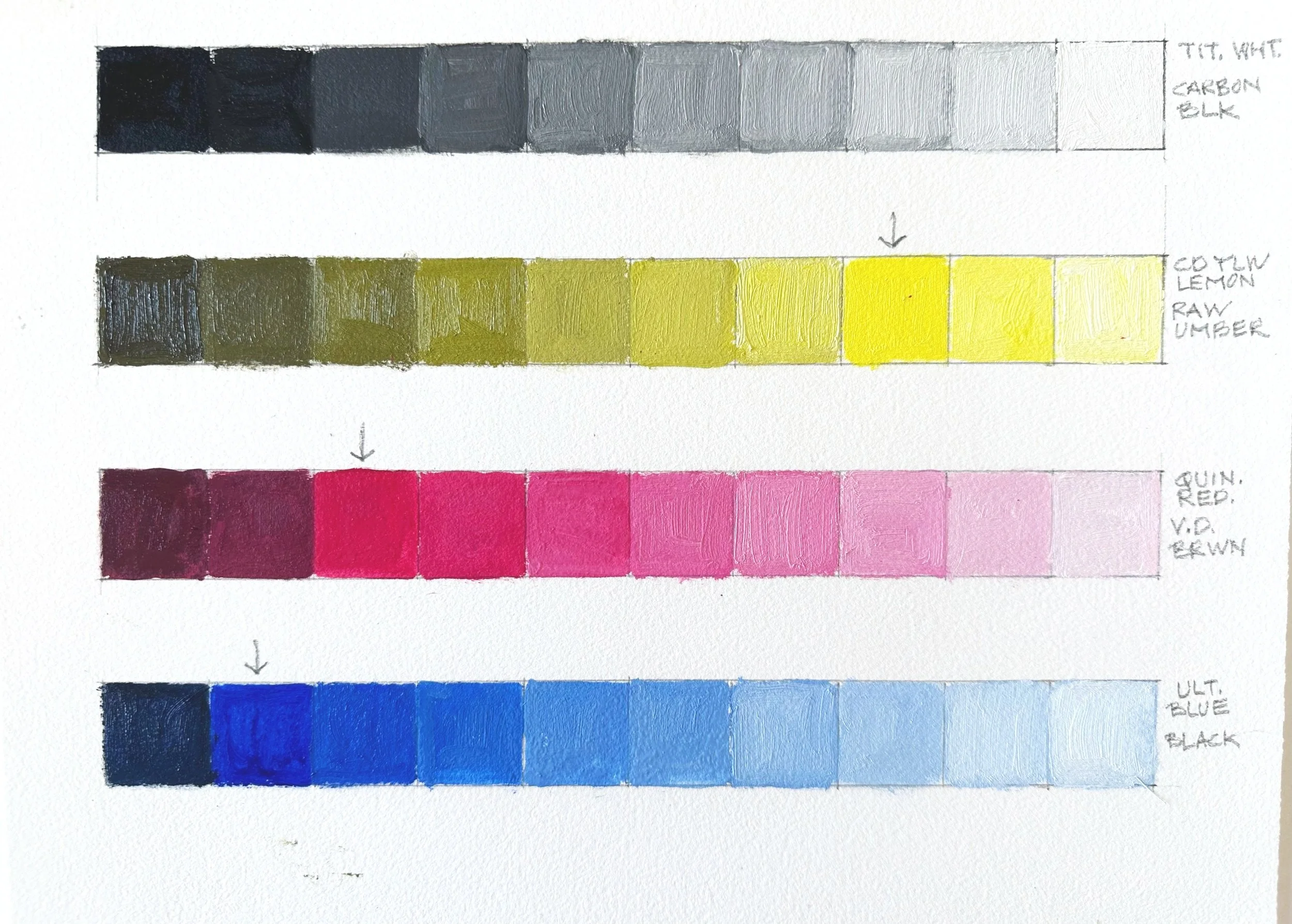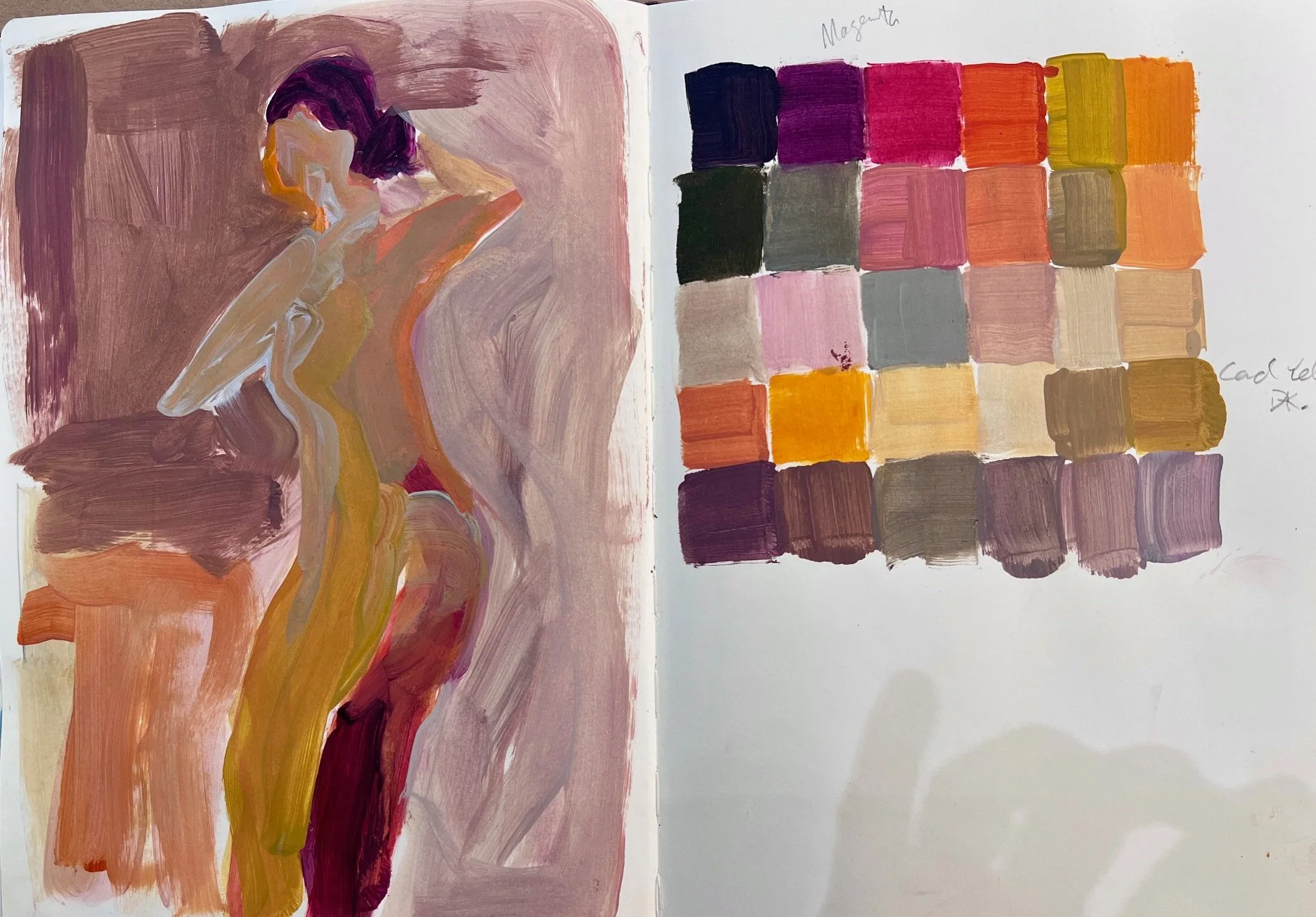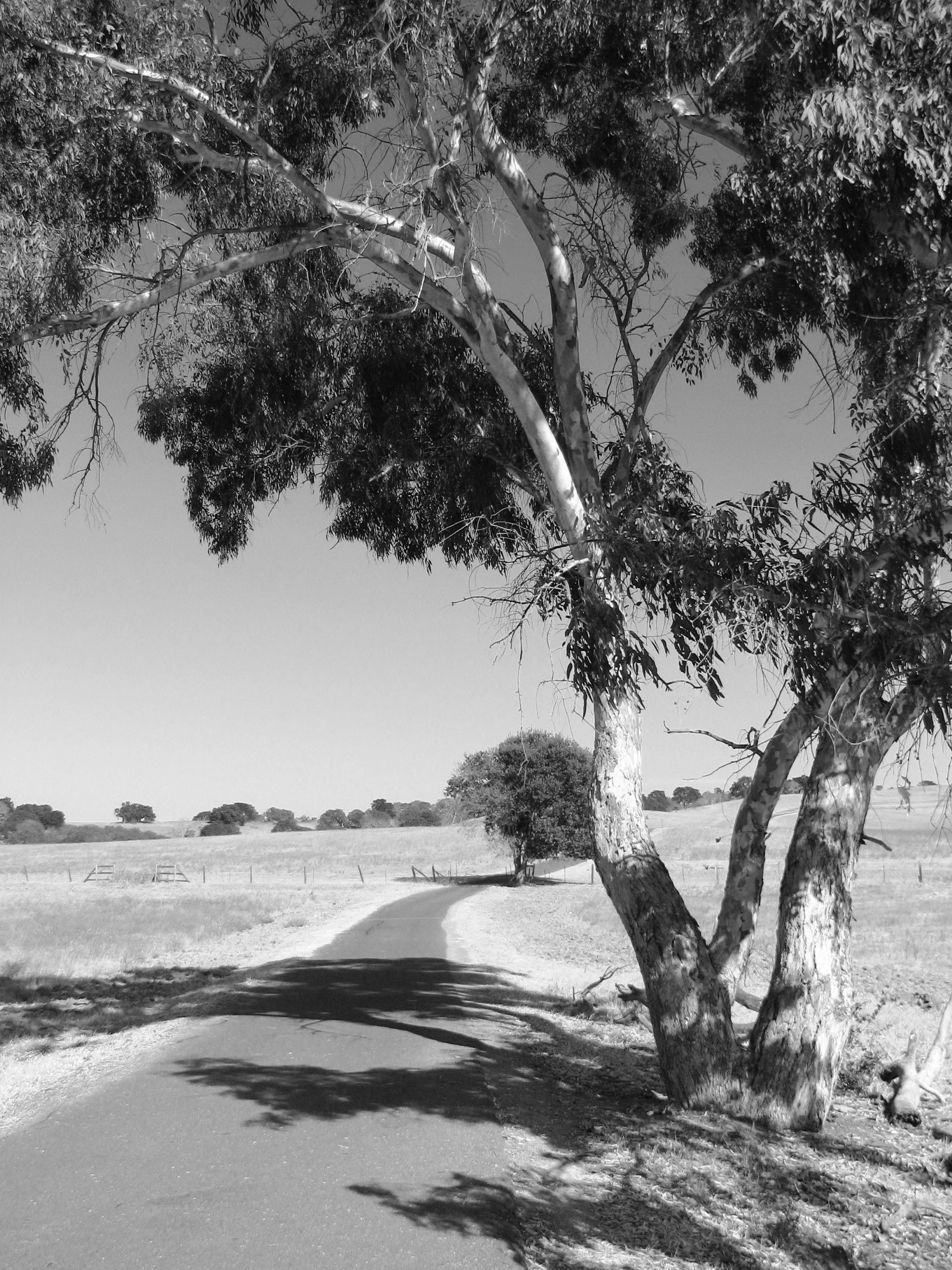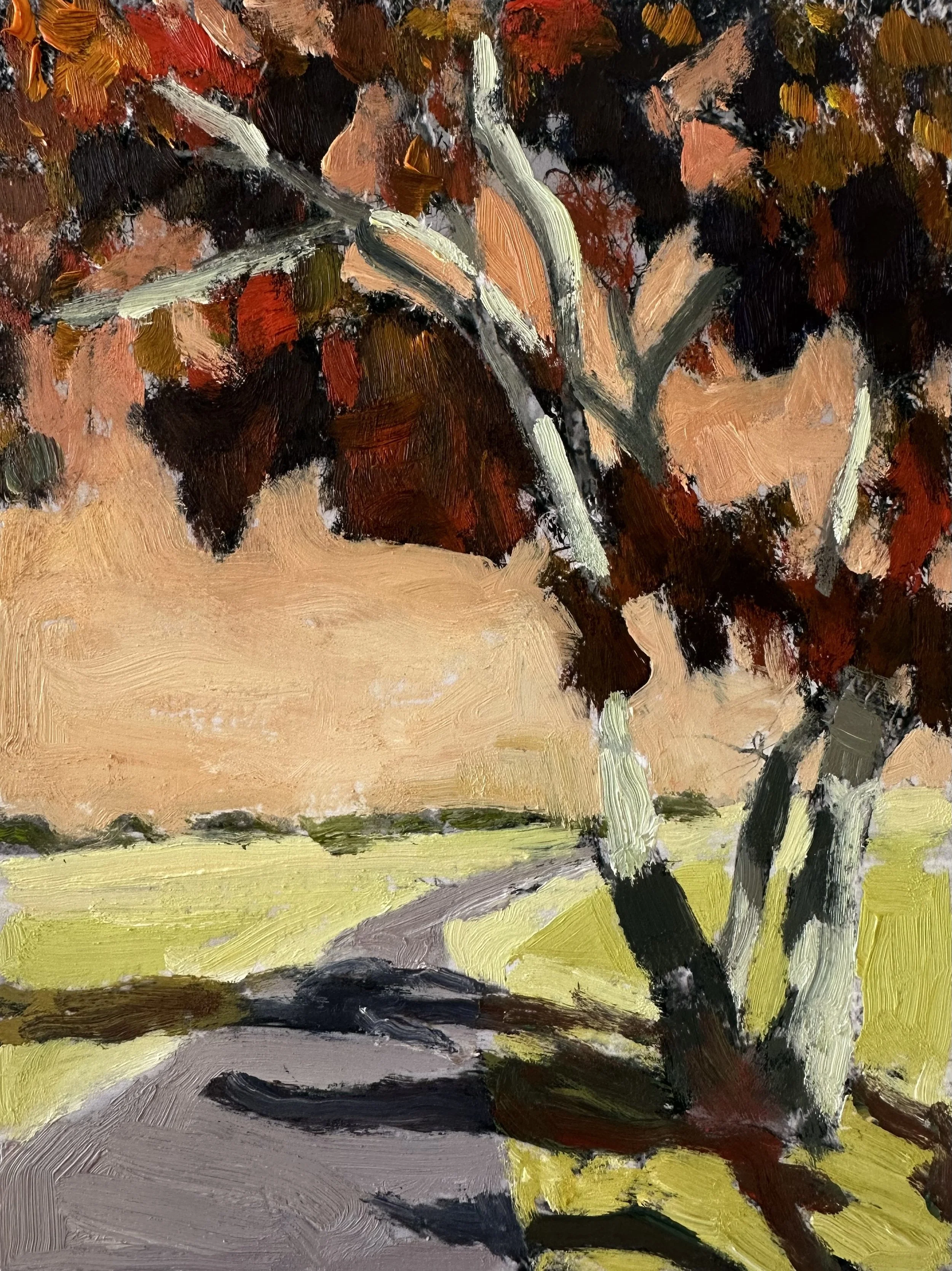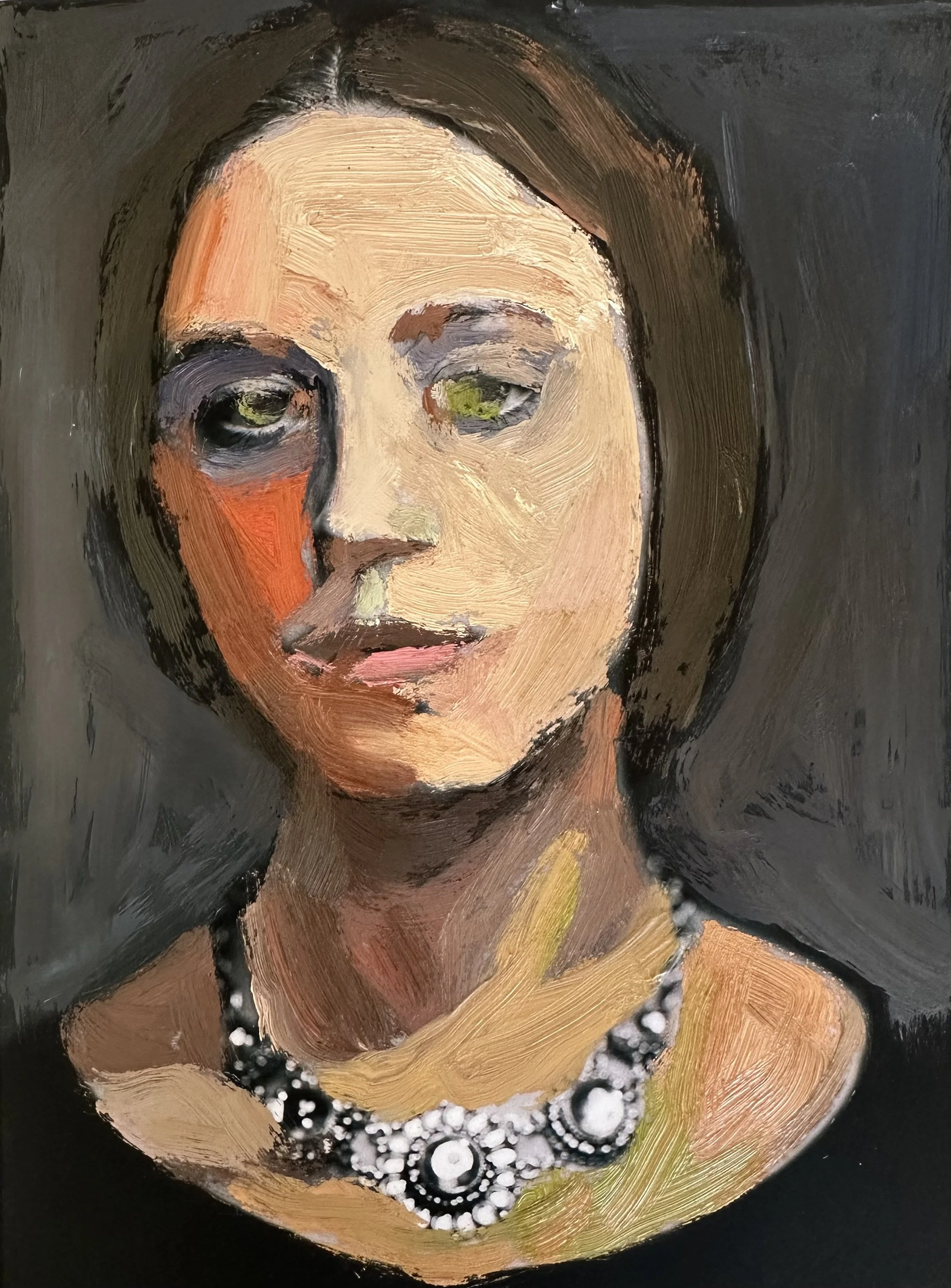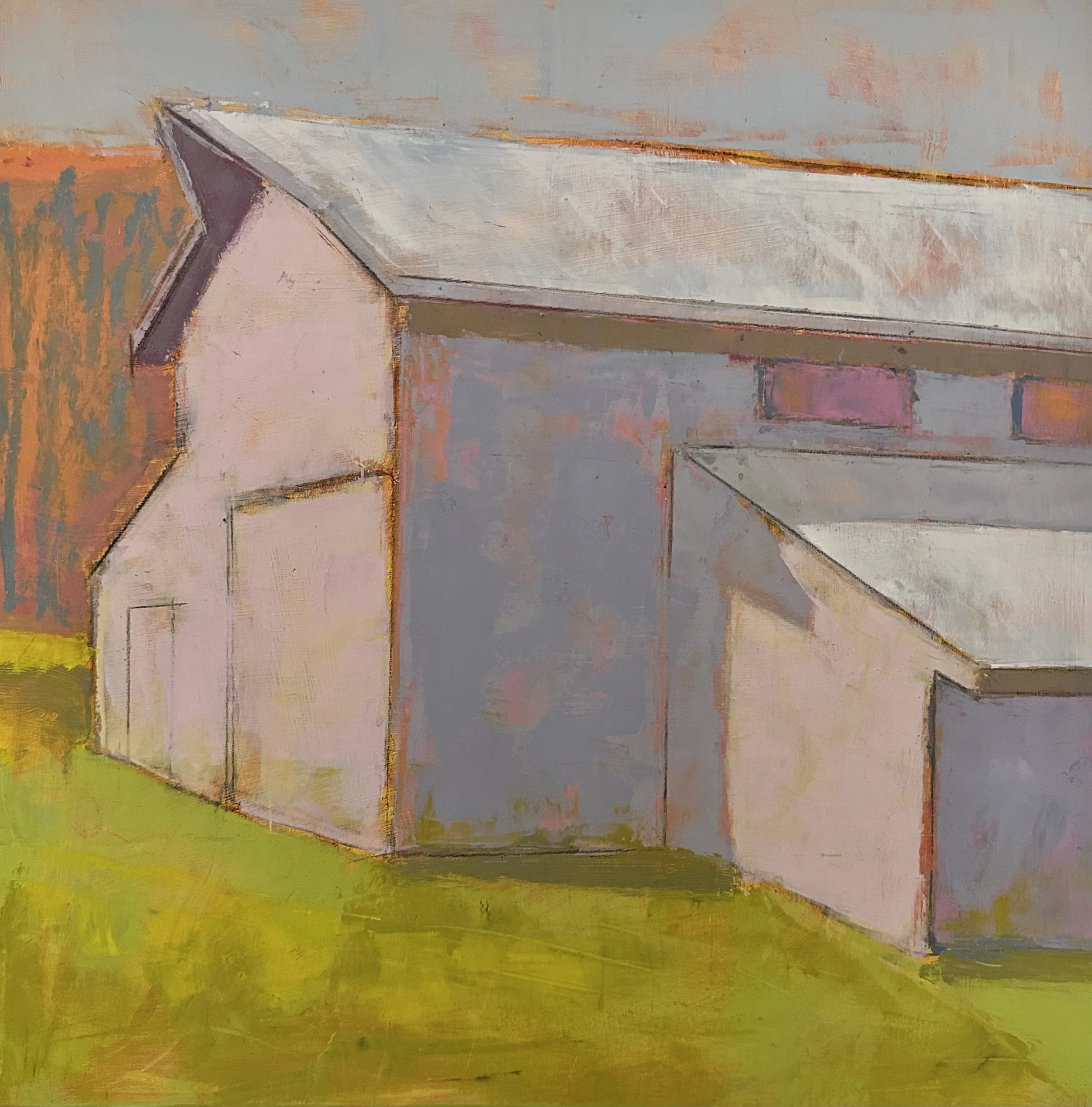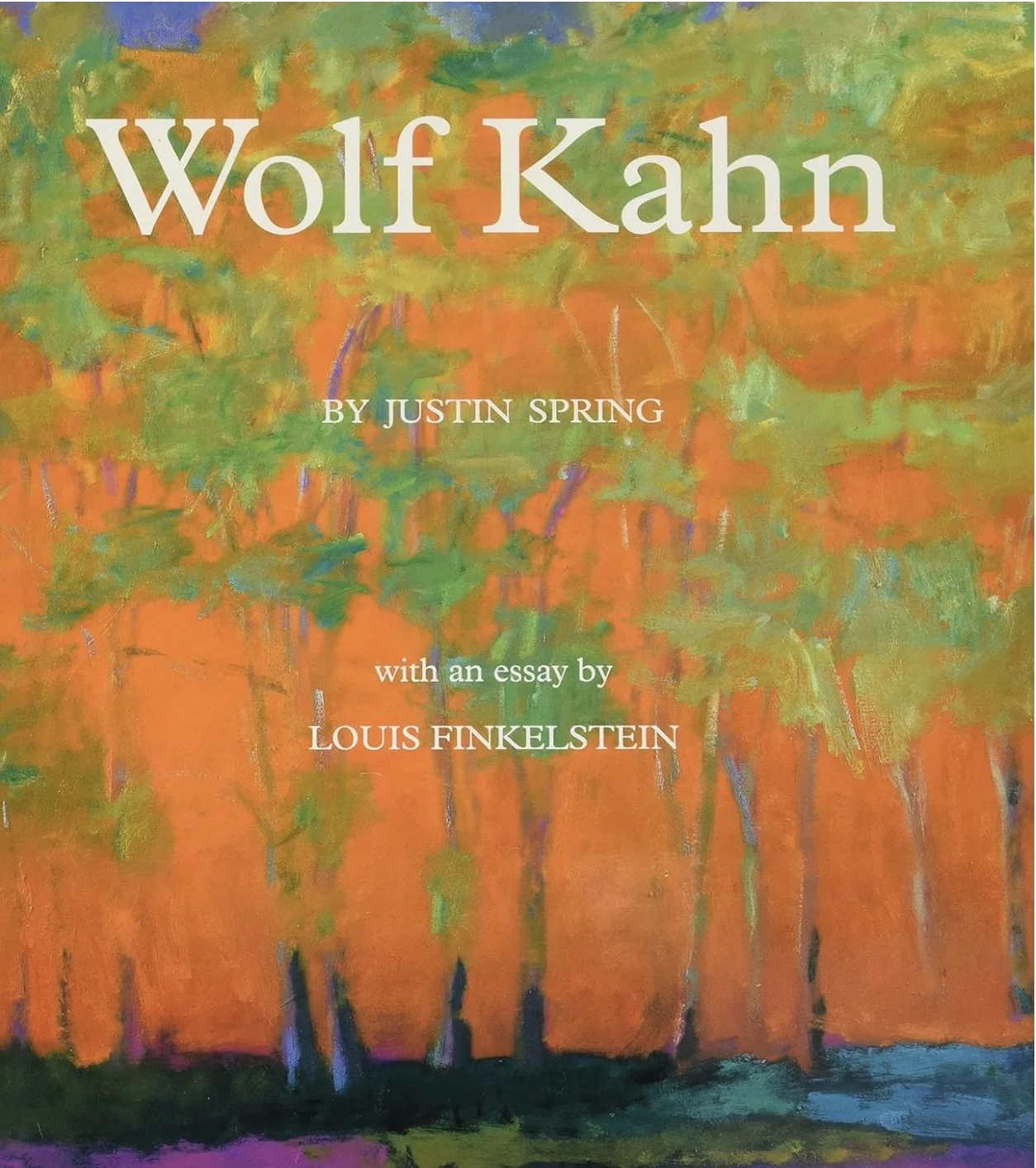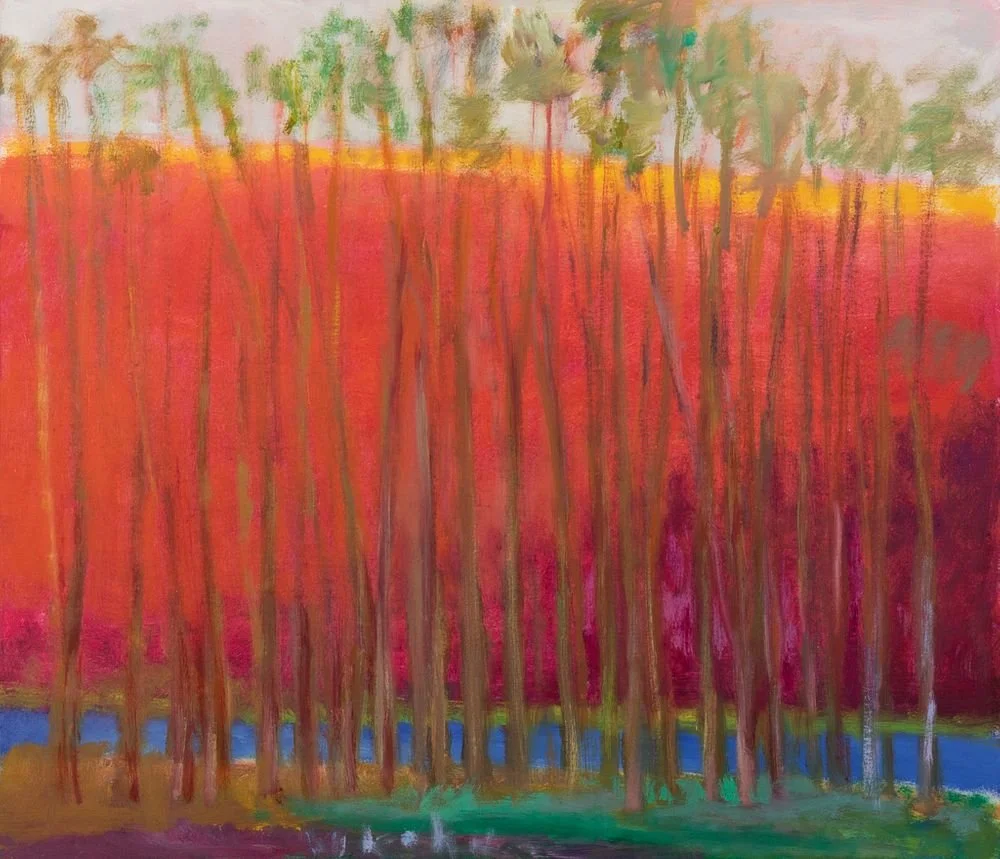lesson two
COLOR and VALUE
Understanding the relationship of Color and Value is KEY to understanding Color and Harmony.
Let’s review the definition of VALUE and some important related terms. We will see in this section why VALUE is such an important player in Color Harmony.
VALUE is the degree of lightness or darkness of a color. The color (hue) is not important in this definition, only how light or dark the color is relative to white and black. (Think of a black and white photo of your painting).
A MID-VALUE PAINTING is a painting created with colors in the mid-range of the value scale which would be approximately 4 - 7 as seen here on the “value finder.”
A HIGH KEY PAINTING is a painting created with mostly light values (towards number 10/white) which would be approximately 7-10.
A LOW KEY PAINTING is a painting created with mostly dark values (towards number 1/black) which would be approximately 1-4.
The value scale shown here can be a helpful tool to help you learn the value of your colors. NOTE: Sometimes you will see this scale reversed with 1 as White and 10 as Black. Be sure to notice which method is being used.
Project Three: SPARK IT!
Creating Color Charts to Learn Values
Painting color charts to learn to see your values is an “invaluable” exercise (pun intended). Even making just a few of these will help refine your color skills. Like practicing scales on the piano, color charts can be a “valuable” discipline.
There are several different ways to make color charts. The charts in this video focus on seeing each color’s corresponding value and also on potentially finding some new color combinations.
▸ PASSWORD: Chart
▸ VIDEO LENGTH: 10:05 minutes
Your Turn:
I encourage you to use several color combinations that you don’t typically mix together when creating your chart.
-
Colors listed below (top to bottom)
Carbon Black ▪ Titanium WhiteRaw Umber ▪ Cadmium Yellow Medium ▪ Titanium White
Van Dyke Brown ▪ Quinacridone Red ▪ Titanium White
Carbon Black ▪ Ultramarine Blue ▪ Titanium White
Alternative Color Charts
For those of you who struggle with “Staying Within the Lines” and find charts way too tedious, here is an alternative. Select two or three colors plus white and black and explore the palette in a sketchbook or whatever format works for you. Here are some examples from Julia Foug who created these color studies in her sketchbook. She both learned how the colors mix and now has a reference to look back on for color inspiration in future paintings!
Be sure to write down what colors you use!
HOW WE GOT TO NOW
〰️
HOW WE GOT TO NOW 〰️
A Little History of Expressive Color in Paintings
This is a short and VERY simplified history in pictures of how we went from the neutrals of Carravagio and Rembrandt to contemporary expressive color in Western Art.
▸ PASSWORD: HISTORY
▸ VIDEO LENGTH: 22:00 minutes
Project Four: THE ART OF SEEING VALUE
Learning to see the value of your colors is extremely important in understanding color and harmony. These are two fun stress-free projects that will help you learn this important skill.
PART 1
▸ PASSWORD: TREE
▸ VIDEO LENGTH: 10:34 minutes
PART 2
▸ PASSWORD: FACE
▸ VIDEO LENGTH: 9:04 minutes
Your Turn:
Use my black and white photos below or choose your own.
Choose a photo with a wide range of values.
It can help to spray the photo with fixative so that the ink will not bleed into your paint color.
Try to match the value of each grey with your paint colors.
You may want to print out a second photo for reference.
Try using expressive colors!! Let your brushwork be loose.
NOTE: If you have previously done a similar project in Own Your Colors 1, then sketch and paint this on a canvas (or other substrate) instead of directly on top of a photograph.
Reimagine How We Use VALUE
Using Limited Values to Create Color Harmony
Now that we have a firm understanding of Value and Color and their relationship, let’s look at different approaches to how we can use Value in our work to create color harmony.
▸ PASSWORD: VALUE1
▸ VIDEO LENGTH: 13:00 minutes
DEMO
〰️
DEMO 〰️
“Stealing” an Artist’s Palette
In this next demo I refer to a Wolf Kahn painting for color inspiration. Kahn is our featured artist in this section and he had a brilliant color sense. Scroll a bit further down to see his Artist Focus. I have several Wolf Kahn books which are well earmarked with notes on his color choices.
I highly recommend “stealing” the palette of a painting which inspires you. There is much to learn from working with another artist’s successful palette. You will learn how to mix those colors and often how they harmonize. You will learn how to pay attention to those crucial concepts of Chroma, Value, and Proportion.
You will also find that your painting will, most likely, come out with at least some different colors than the original source. Mine certainly did. This is a good thing. You will learn to see if those colors work within your painting or if they do not, and you will improve your color-choice decisions.
By working with another artist’s palette, you will begin to understand the original artist’s color journey as well.
Project Five: “STEAL” A PALETTE
A HIGH KEY Painting Inspired by Wolf Kahn
This video is broken into two parts for ease of downloading and watching.
PART 1
▸ PASSWORD: STEAL1
▸ VIDEO LENGTH: 20:12 minutes
PART 2
▸ PASSWORD: STEAL2
▸ VIDEO LENGTH: 14:20 minutes
Your Turn:
Choose a HIGH KEY Wolf Kahn painting or a different artist’s work whose high key color palette inspires you. Use my barn photo or create a painting with your own subject matter, using the colors/palette of your inspirational painting. (Remember HIGH KEY = values on the lighter end of the value scale).
Pay attention to any neutral colors in the work and how these neutrals may support the more saturated colors.
Pay attention to color proportions. Are you using similar proportions or are you changing them? How does this affect the painting?
Are your values close together? It is perfectly OK to have a few dark values within a HIGH KEY painting.
Your palette colors will most likely not match exactly, and that is perfectly OK.
“Pink Barn” Demo Palette Colors
-
Colors listed below (left to right)
Ultramarine Blue
Yellow Green
Quinacridone Red
Cadmium Red Light
Cadmium Orange
Cadmium Yellow Medium
Cadmium Yellow Light
Titanium WhiteBuff Titanium
Provence Blue
Blue Grey
Portland Warm Grey
Portland Cool GreyCold Wax Medium
Artist Focus
〰️
WOLF KAHN
〰️
Artist Focus 〰️ WOLF KAHN 〰️
Wolf Kahn was a brilliant, well loved colorist and landscape painter. This video shows several of his pastel paintings with a reading of Kahn’s own words describing his thoughts on art and his work. If you are interested in watching him actually speak go to YouTube where there are several videos, however, they are all rather poorly produced. I have included the link to one that I found the most interesting and amusing below.
“Colors should never be allowed to merge too easily into their surroundings. If a color drowns in the totality, it loses its energy: it might not have been used at all. Like a good guest at a dinner party, a color should participate in the occasion but must not be allowed to take over the conversation to the point where other guests, who also wish to participate, are squelched, and cannot be heard.”
A great book for your library with dozens of beautiful images for your reference.
Click on image to see full painting
What is a Notan and how can it help me?
The word Notan is derived from the Japanese word Nong, which means strong, thick, or concentrated, and the word Dan, which means weak. A Notan painting has only two, three or four values. Notan paintings and studies can create a balanced and harmonious work using this simple concept of contrast and opposites.
NOTAN FACES
Using the concept of a Notan is a great way to abstract faces. Learning to see the important planes of faces by reducing values can truly help you to simplify your work. The painting in the following demo is made up of four values which give you a good likeness, yet little detail.
NOTAN FIGURES
Notans are used in all kinds of subject matter from pure abstract to landscape and figurative. Limiting your values can create some very dramatic effects. Reduicng the value in your figures will help you to see the important shapes and forms.
NOTAN BACKGROUNDS
Creating a Notan from a photo can immediately abstract the “background” areas surrounding your figure. Using this tool can give you a jump start on ideas for your ‘backgrounds.”
COOL TOOL
〰️
COOL TOOL 〰️
NOTANIZER APPLICATION
Fortunately for us there is this super cool APP, available in both Apple and Android versions, called Notanizer. You can upload any photo into the App and it will reduce it to how ever many values you choose. Personally, I like the selection of 4 Values.
There are many examples if you do some searching to see what you can do—or of course, just get the app and experiment on your own!
Project Six: PAINTING A NOTAN
In this fun project I used an image from “UnSplash",” a royalty free website. It looks like Liv Tyler to me! I uploaded the black and white photo into the Notanizer App and selected 4 values. I used Ultramarine Blue, a touch of black and Titanium White to create four blue values and then painted the image.
▸ PASSWORD: NOTAN
▸ VIDEO LENGTH: 19:40 minutes
Your Turn:
Create a Notan of three to four values. Faces are fun because this project helps you to learn the shapes of the face. If you prefer a different subject matter, that is ok too!
Start with a monochromatic version of one color plus white, and black to get your “black value.”.
For a more advanced version select several colors but continue to match the values of the Notan.
Have fun!



